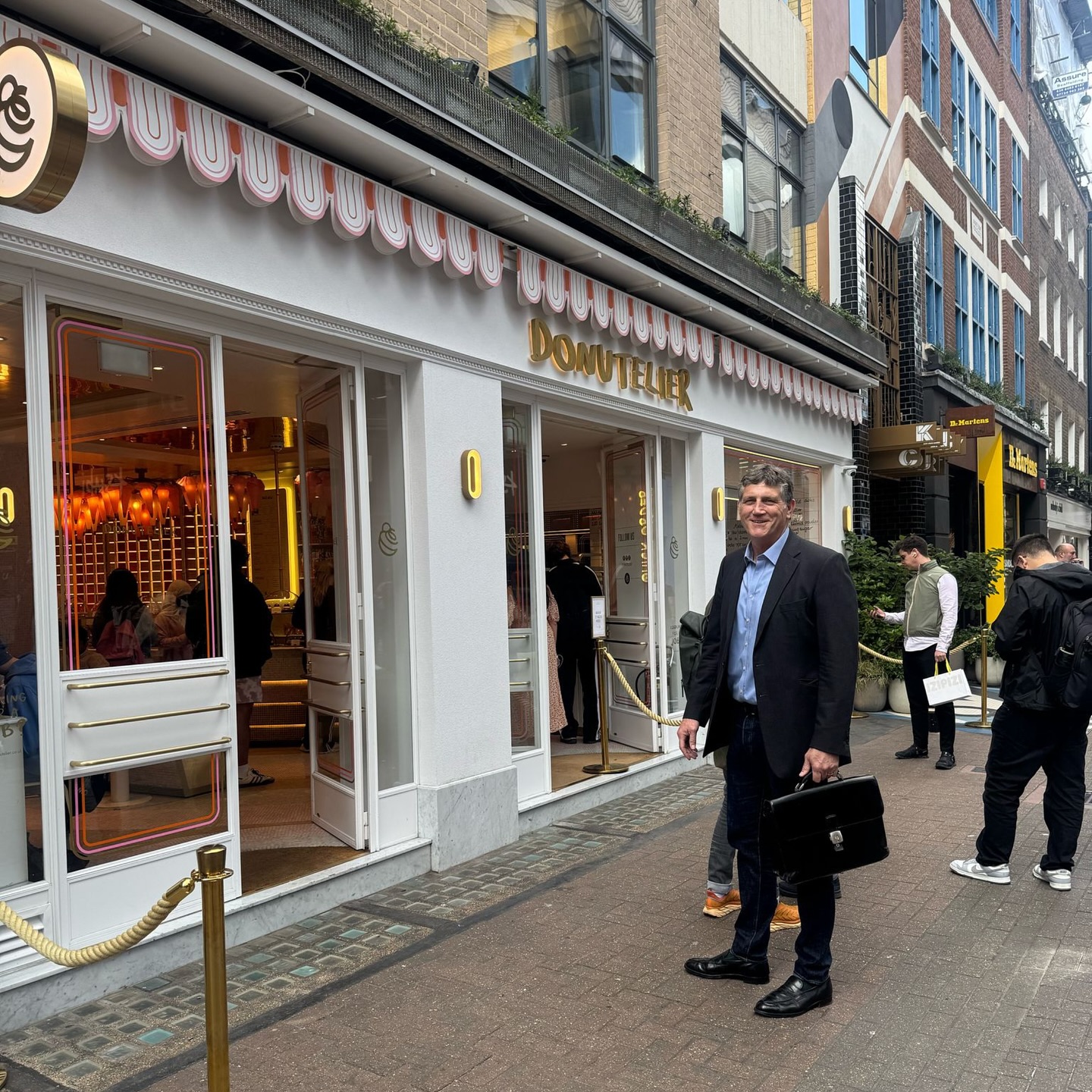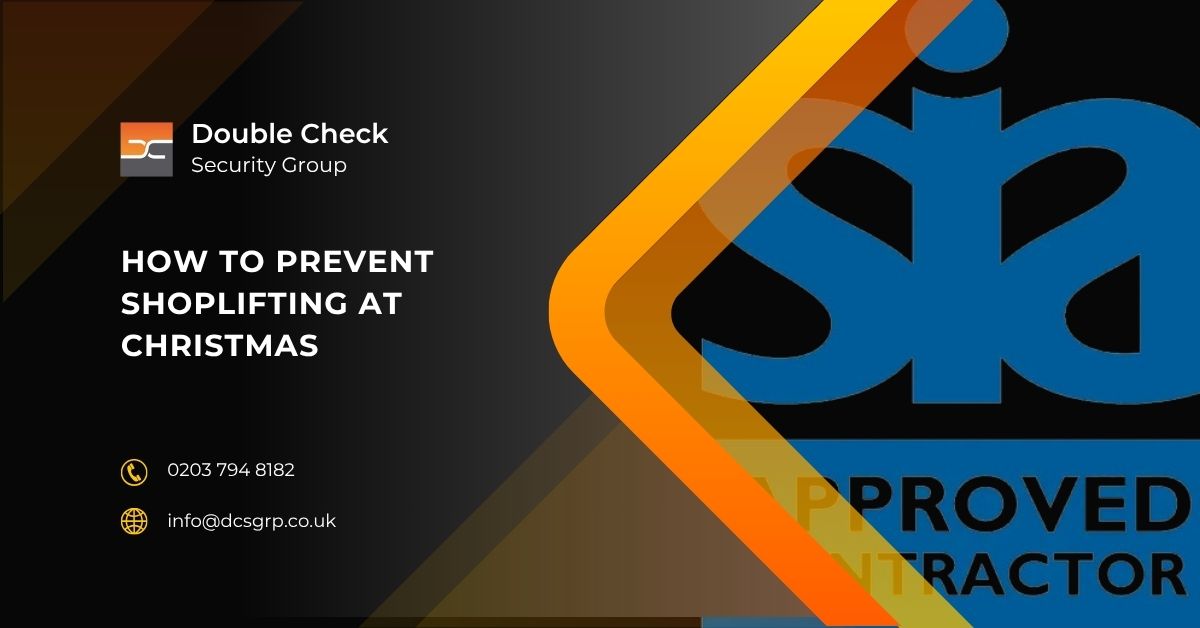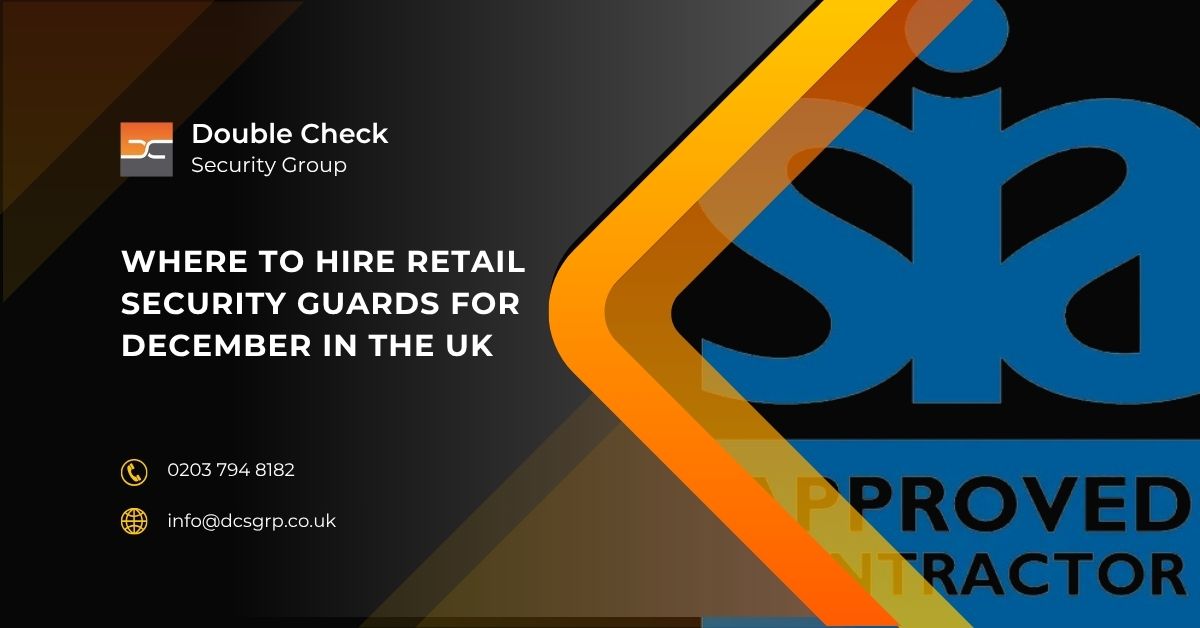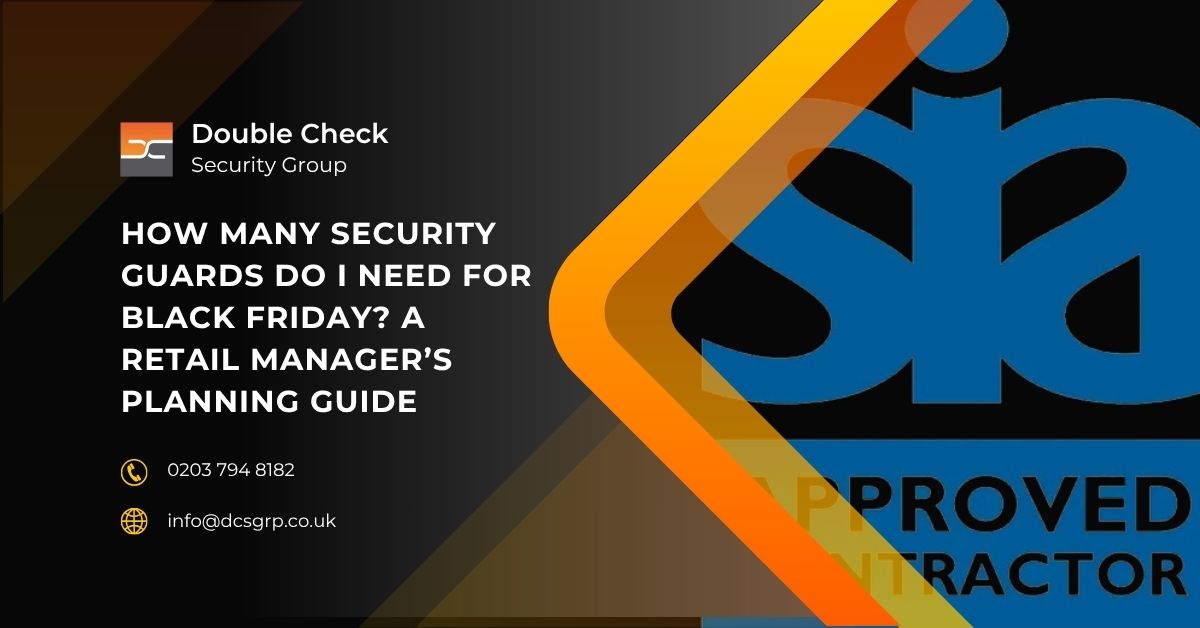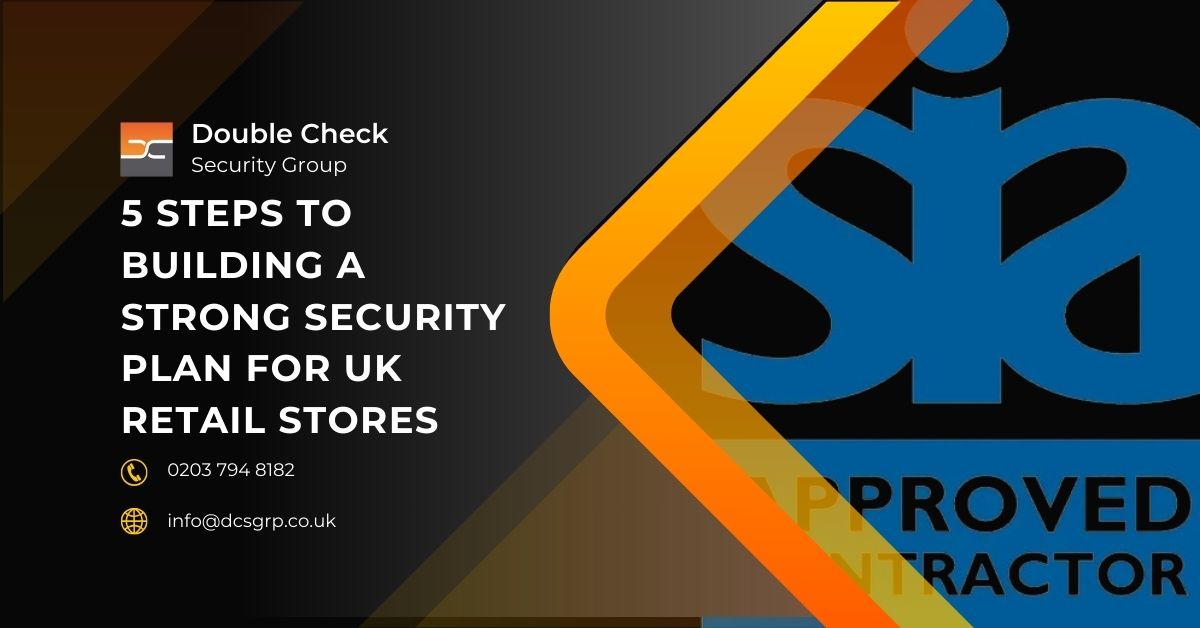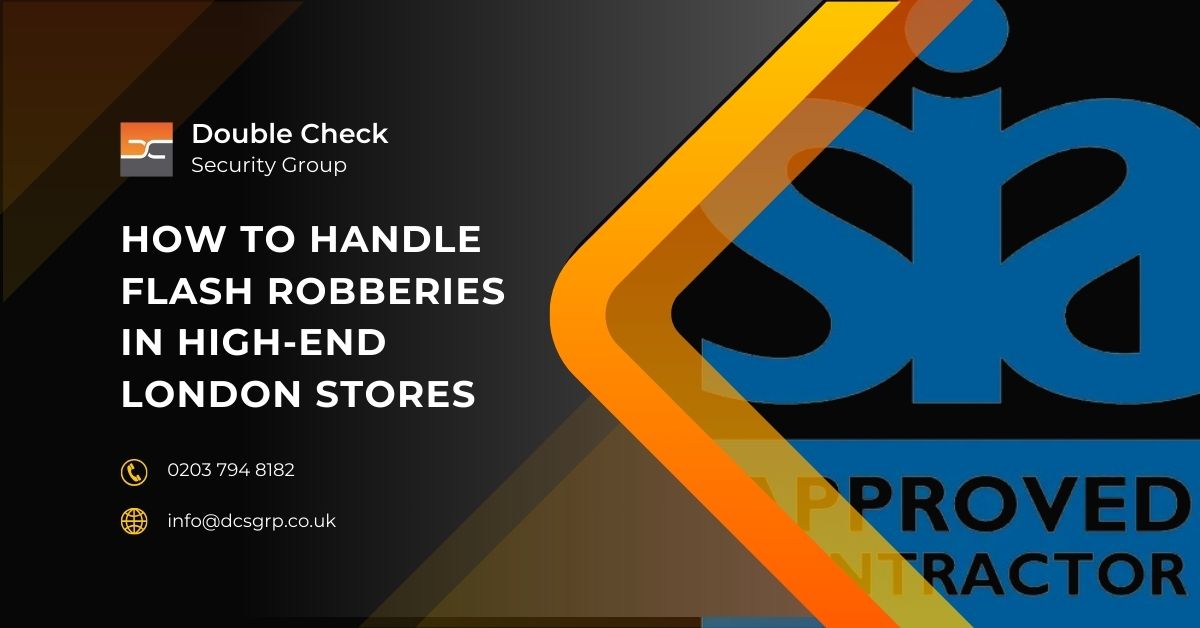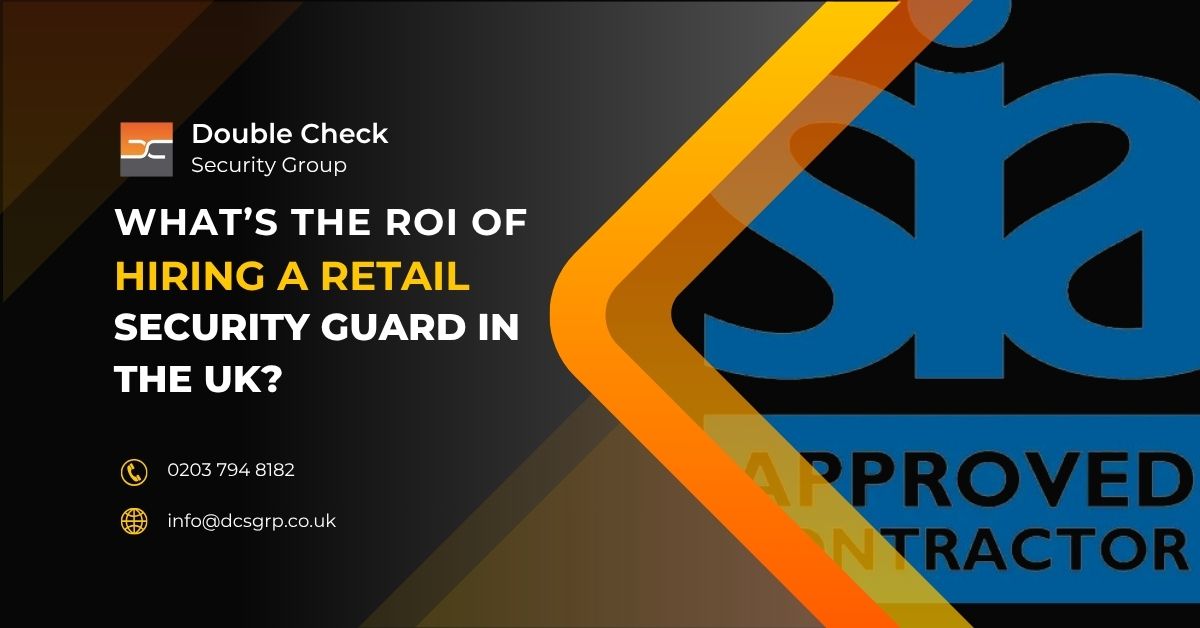How Do Visible Security Guards Improve Retail Customer Experience?
Visible security guards improve the way customers feel and behave in retail settings by doing more than just watching for theft. Their presence helps people feel safer, more relaxed, and more confident while shopping. This sense of reassurance can make a real difference to how long people stay in store, how likely they are to return, and how positively they view the brand. For store managers and retail decision makers, guards are now seen as part of the customer experience strategy. They support trust, provide brand assurance, and help the store run efficiently. Their role now spans across safety perception, service support, operational flow, and CX uplift.
1. Safety First: Do Visible Guards Prevent Theft and Reassure Shoppers?
Strengthening Shoplifting Prevention and Store Safety
Having a uniformed security guard at the entrance or present on the floor acts as a visible deterrent to theft. Their presence significantly reduces opportunistic shoplifting and helps maintain shrinkage control. It also reassures genuine customers who see the store as well managed and focused on safety.
Enhancing Customer Perception of Safety
People shop more comfortably when they feel safe. A visible deterrent presence such as a guard creates spatial safety that relaxes shoppers. This contributes to a more positive customer experience and supports store trust factors.
Supporting Retail Loss Prevention Strategies
Security staff who are part of the store’s visual language reinforce a clear message of vigilance. Their integration into retail loss prevention planning allows for smoother coordination with in-store teams. This balance of deterrent and service makes them part of the brand’s overall CX strategy.
2. First Impressions: Why Are Security Guards Part of a Store’s Visual Identity?
Uniforms and Professional Demeanour as Brand Indicators
A guard’s appearance plays a part in how customers perceive the store from the moment they arrive. Professional uniforms, clean presentation, and brand-aligned grooming help set expectations about service quality and attention to detail.
Creating a Trustworthy and Polished First Impression
Customers often form opinions within seconds of entering a retail space. A security guard who is well presented and welcoming contributes to that initial perception. Their presence reinforces visual professionalism and clean brand identity.
Guards as Branded Touchpoints in Retail CX Strategy
Security personnel are part of the overall retail footprint. Their placement at entrances, exits, and high traffic zones puts them in regular contact with customers. When trained to be approachable and aligned with the store’s tone, they serve as branded touchpoints that enhance the customer journey.
Pro Tip : Position guards where shrinkage risk overlaps with customer touchpoints. This maximises their effectiveness in both protection and brand interaction.
Make Your Store Safer and Smarter
We help you integrate trained security with CX insights to improve footfall flow and customer satisfaction.
3. Conflict Prevention and Emergency Response
Why Preparedness Protects Customer Experience
Security guards are often the first to spot issues before they escalate. Their conflict training includes de escalation, calm communication, and non confrontational body language. These skills protect the store environment and keep interactions from turning into negative experiences.
Guards as First Responders in Emergencies
From sudden illness to evacuation protocols, guards are trained in reactive professionalism. They can guide customers, assist with emergency services, and support the store team under pressure. Their presence adds confidence to a store’s emergency readiness.
Maintaining Calm in High Stress Situations
Visible security reduces panic during disruptions. Their presence supports incident management and crowd calming when stores face high stress moments. By keeping shoppers informed and reassured, guards help preserve the retail experience.
4. Micro-Moment CX: Where Do Security Guards Add Value Across the Customer Journey?
Mapping Their Presence Across Entry, Aisle and Exit Points
From a welcoming nod at the door to monitoring exit points, guards influence every stage of the customer journey. These touchpoints contribute to brand assurance and customer satisfaction.
Enhancing Store Flow and Shopper Reassurance
Guards help guide foot traffic, manage trolley safety, and monitor queues. This supports retail UX by creating a smoother in-store flow and keeping aisles easy to navigate.
Aisle Awareness and Queue Monitoring
Shoppers feel more at ease when they notice subtle support around them. Guards help maintain spatial awareness, offer cart assistance, and manage lines during busy times. These small touches reduce frustration and support a positive perception of the store’s service culture.
5. Customer Assistance: Are Security Guards Also Helpful to Shoppers?
Supporting Customer Needs With a Friendly Approach
Security guards are increasingly seen as approachable figures who can offer help to customers. When a shopper needs directions to a product aisle, assistance with accessibility, or even a pushchair-friendly route, guards are often the first point of contact. This friendly direction adds a personal touch to the visit and supports service positioning that places the customer at the centre of the store’s operations.
Providing In Store Aid That Builds Loyalty
Shoppers are more likely to return to places where they feel seen and supported. A security guard who takes the time to help someone find a lift or who steps in to help carry a large item creates memorable experiences. These small acts of service build trust and a sense of connection, encouraging loyal behaviour and contributing to a more helpful store culture.
Acting as Approachable Authority Figures
Customers trust staff who are clearly knowledgeable and approachable. A well trained guard communicates confidence while also showing empathy. This balance of authority and friendliness makes them reliable points of contact during busy hours or periods of high footfall. It supports queue management and helps prevent operational friction points.
Guards as Part of the Store Trust Framework
Visible guards reinforce the store’s wider safety signals. Their involvement in wayfinding, guest assistance, and overall retail flow supports customer-first safety strategies that align with trust cues across the store.
6. Emotional Safety and Shopper Psychology
Why Do Shoppers Spend More When They Feel Safe?
Feeling emotionally secure in store supports confident decision making. When customers are not distracted by concerns over personal safety or antisocial behaviour, they are able to focus on their shopping. That emotional ease improves dwell time and creates a more relaxed mindset, which increases the likelihood of additional purchases and positive store sentiment.
Reducing Shopping Stress Through Presence and Professionalism
The visible presence of security helps to reduce mental tension. People feel more at ease walking into a store where they know someone is looking out for their safety. This perceived risk reduction also encourages families, older shoppers, and individuals with vulnerabilities to visit more regularly. It supports psychological comfort, which plays a central role in customer behaviour and basket value.
Supporting Shopping Freedom Through Discreet Oversight
Many customers value the sense that someone is keeping an eye on things, even if they never interact directly with a guard. The knowledge that someone is nearby if needed gives people the confidence to browse more freely. For stores, this invisible reassurance supports brand trust and improves how safe customers feel inside the retail footprint.
Shopper Confidence and Spatial Safety
Emotional safety extends beyond crime deterrence. A clear, well monitored layout, consistent foot patrol presence, and proactive customer reassurance all contribute to reduced shopper anxiety. These store trust factors play an active role in driving footfall confidence and purchase decisions.
Pro Tip : Train guards in both safety protocol and service etiquette. This dual approach builds stronger rapport with customers and improves incident outcomes.
Upgrade Your In-Store Experience
Let our retail security experts show you how visible guards can boost trust, sales, and customer loyalty.
7. Technology Enabled Security That Supports Seamless Shopping
How Does Security Technology Work Alongside Guards?
Security guards and surveillance technology are most effective when they work together. CCTV, AI enabled monitoring, and data driven security solutions provide real time visibility across the store. Guards then act on this information, using smart tracking tools to spot patterns, prevent theft, and assist customers more proactively. The outcome is a safer and more responsive retail space that supports both safety operations and experience delivery.
Using Predictive Insights to Improve Footfall Management
Data analytics tools help retailers understand where and when they need visible guard presence most. By identifying high risk areas or time periods, guards can be positioned where they are most effective. This supports visitor tracking strategies and aligns with broader store flow planning. It enhances spatial safety and contributes to queue control, shopper reassurance, and store trust dynamics.
Discreet Surveillance That Builds Trust
When implemented well, surveillance feels protective rather than intrusive. Customers are reassured by the knowledge that there is passive oversight, not only by staff but by systems that are there to keep them safe. Combined with well trained security personnel, this approach strengthens brand assurance and supports a customer-first safety strategy.
Linking Technology and CX Metrics
Retailers can track trust conversion metrics through technology-enabled interventions. This includes measuring bounce rate reduction, increased dwell time in previously low confidence zones, and improved in-aisle interaction data where guards are visible. This insight loop aligns store safety investments with broader customer experience returns.
8. Training Makes the Difference in Security Guard Performance
What Kind of Training Do Customer Experience Focused Guards Receive?
Modern retail guards are expected to be more than security personnel. Their training includes interpersonal skills, empathy based communication, and hospitality aligned behaviour in addition to traditional security competencies. This dual skillset helps them respond with calm professionalism whether they are helping a lost shopper or managing a tense situation.
Developing Guards With a Service Mindset
Retailers are investing in people first training programmes that teach guards to support both safety and service. A guard who understands behavioural cues and uses emotional intelligence adds to the customer experience while also supporting asset protection. This approach helps them stay alert without appearing aggressive, building rapport while maintaining vigilance.
Why Empathy and Conflict Training Matters
Conflict training focused on de escalation is a vital part of modern guard preparation. Instead of reacting with force or alarm, guards learn how to manage tone, body language, and verbal communication to keep things calm. This not only avoids disruption but protects the shopping environment and encourages a more positive sentiment toward the brand.
9. Retail Operations Support
Reducing Pressure on Staff Through Security Support
Security guards play a quiet but valuable role in helping store teams focus on their core duties. By managing queue control, bag checks, and entry monitoring, guards reduce the burden on retail staff and contribute to smoother operations. They help keep the floor moving, which improves customer flow and satisfaction.
Supporting Peak Hour Management and Store Logistics
At busy times, security guards help coordinate foot traffic, guide customers to available tills, and intervene early if crowding begins to form. Their real time awareness supports retail logistics, improving how effectively stores manage their layout and service flow. This also helps reduce frustration for customers during high demand periods.
Working as Backup During Staff Shortages
In situations where staff levels are low or team members are pulled in several directions, guards can step in as a visible support presence. This includes offering help with directions, ensuring safety procedures are followed, and being available when assistance is needed. This operational backup supports retail workflow and maintains service quality even under pressure.
10. How Does Visible Security Improve Return on Investment in Customer Experience?
Linking Guard Presence to Measurable Retail Outcomes
Visible guards influence customer satisfaction in a way that can be tracked through metrics like dwell time, foot traffic retention, and average basket size. Stores that invest in security as part of their retail customer experience strategy often see higher customer lifetime value and repeat visits. This supports the business case for positioning security not as a cost but as a contributor to commercial success.
Customer Trust as a Conversion Driver
When people feel safe, they shop with more confidence and less hesitation. This improved shopper mindset supports trust based conversion, where customers are more likely to complete purchases and return again. Visible security becomes part of the store’s value offering, especially in locations with high traffic or frequent operational challenges.
Loyalty and Word of Mouth From Safety Perception
Positive sentiment about safety spreads through online reviews, local recommendations, and customer loyalty. People remember feeling safe and welcome, and that directly impacts how they speak about the brand. This organic advocacy helps reinforce brand assurance and contributes to long term return on customer experience investments.
Retail Security Implementation: Practical Tips for Store Leaders
Review and Align Uniform and Conduct Policies
Security guards should represent the brand visually and behaviourally. Store managers should review uniforms, customer interaction protocols, and posture expectations to ensure consistency with other staff. This improves visual cohesion and reinforces professionalism.
Integrate Guards Into CX Training
Rather than training guards in isolation, include them in customer experience workshops and service planning sessions. This builds a shared sense of purpose and gives them insight into customer expectations beyond their security role.
Audit Footfall and Friction Points Regularly
Use retail analytics to assess where guards are most needed. Look at queue build up areas, high interest product zones, and times of day with increased customer frustration. Align security placement with these areas to optimise both safety and satisfaction.
Final Thought for Retail Leaders
Retail security is no longer separate from the customer experience strategy. Guards who are trained to support both safety and service give customers a reason to trust, return, and recommend. By recognising their full value and integrating them properly, retailers create a more complete and reliable experience for every visitor.


